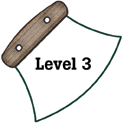|
National Science Education Standards
Scientific inquiry and technological design have similarities and differences.
Scientists propose explanations for questions about the natural world,
and engineers propose solutions relating to human problems, needs, and
aspirations. Technological solutions are temporary; technologies exist
within nature and so they cannot contravene physical or biological principles;
technological solutions have side-effects; and technologies cost, carry
risks, and provide benefits. (Page 166)
Technological solutions have intended benefits and unintended consequences.
Some consequences can be predicted, others cannot. (Page 166)
Technology influences society through its products and processes. Technology
influences the quality of life and the ways people act and interact. Technological
changes are often accompanied by social, political, and economic changes
that can be beneficial or detrimental to individuals and to society. Social
needs, attitudes, and values influence the direction of technological
development. (Page 169)
Science and technology have advanced through contributions of many different
people, in different cultures, at different times in history. Science
and technology have contributed enormously to economic growth and productivity
among societies and groups within societies. (Page 169)
Science cannot answer all questions and technology cannot solve all
human problems or meet all human needs. Students should understand the
difference between scientific and other questions. They should appreciate
what science and technology can reasonably contribute to society and what
they cannot do. For example, new technologies often will decrease some
risks and increase others. (Page 169)
|
|
Benchmarks
Engineers, architects, and others who engage in design and technology
use scientific knowledge to solve practical problems. But they usually
have to take human values and limitations into account as well. (Page
46)
New technologies increase some risks and decrease others. Some of the
same technologies that have improved the length and quality of life for
many people have also brought new risks. (Page 56)
|

